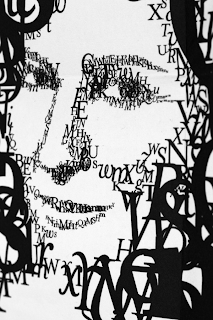Image and text
An image, especially a photograph should have
a description, title or even have text included within the image. The text
should fit the Image. The image is “Nude” until you put it into context. It may
need to go with other images also to give it a description of what it is.
Sophie Calle’s work is very interesting. Born in 1953, she is a French writer,
installation and conceptual artist as well as a photographer. Her work is
distinguished by the use of arbitrary constraints. It evokes the French literary movement
of the 1960’s, which is also known as Ouilipo.
Her work frequently depicts human vulnerability, which examines identity
and intimacy. She has a detective like ability to follow strangers and
investigate their private lives. Her work usually includes panels of texts,
which is usually her own handwriting.
 |
| Sophie Calle |
 |
| Sophie Calle |
 |
| Sophie Calle |
In her work entitled Suite Venitienne, Sophie
followed a man she had met at a party in Venice in 1979, She disguised herself
to follow him around the city and photographing him. The images she captures
are in Black and white and are accompanied by text. She carried out the
surveillance of the man only identified as Henri B
In her project “The Hotel” she got herself
hired as a chambermaid. She explored the writings and objects of the hotels
guests. This project involved text and photography.
Barbra Kruger born in America in 1945 is a conceptual artist. Much of her work is
black and white photographs overlaid with declarative captions. The phrases she uses often include pronouns
such as “you”, “your”, “I”, “we”, “they”.
One of her pieces includes the phrase,” I
shop, therefore, I am”
She has said
that, “ I work with pictures and words because they have the ability to
determine who we are or who we are not”.
 |
| Barbra Kruger |
Rene Magritte was born in 1898 in Belgium and was a surrealist artist. He became well
known for a lot of witty and thought provoking images that fell under the
umbrella of “Surrealism”. He challenges observer’s preconditioned perceptions
of reality within his images.
 |
| Maigritte |
 |
| Maigritte |
Bibliography:
http://en.wikipedia.org/wiki/René_Magritte
http://www.musee-magritte-museum.be/Portail/Site/Typo3.asp?lang=FR&id=languagedetect
http://en.wikipedia.org/wiki/Barbara_Kruger
http://www.barbarakruger.com
http://en.wikipedia.org/wiki/Sophie_Calle
http://www.egs.edu/faculty/sophie-calle/biography/























